Iran Government Media Report Dead And Injured In 'Terror' Attack
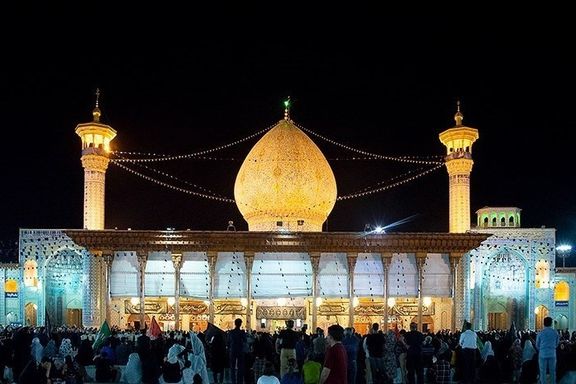
Media in Iran report “a terrorist attack” in Shahcheragh shrine in Shiraz, capital of Fars Province that reportedly killed and injured several people Wednesday evening.

Media in Iran report “a terrorist attack” in Shahcheragh shrine in Shiraz, capital of Fars Province that reportedly killed and injured several people Wednesday evening.
Tasnim and Fars news agencies affiliated with the Revolutionary Guard said that 10-13 people were killed and about 15 wounded, but the later government media raised the death toll to 15.
According to these reports three or four people opened fire inside the shrine and two were arrested.
Tasnim quoted a security source who said those responsible were "Takfiri, Wahhabi elements," referring to Sunni extremists.
Nationwide protests are raging in Iran on Wednesday to mark the 40th day of Mahsa Amini’s death, who was arrested by the ‘morality police’ in mid-September and died in police custody.
The information from government-controlled websites cannot be independently verified and the possibility of a false-flag operation to blame the protesters and “enemies” of the Islamic Republic exists.


Iran’s foreign minister Hossein Amir-Abdollahian called Wednesday for Ukraine to present any evidence that Russia had used Iranian-made drones in the conflict.
Two days after saying Iran would “not remain indifferent” to such use, Amir-Abdollahian rejected “the baseless claims of some countries.” Addressing a press conference with visiting Belorussian Foreign Minister Vladimir Maki, Amir-Abdollahian said Ukrainian authorities should “present any evidence…in a bilateral meeting with the attendance of experts.”
Visiting Washington, Israeli President Isaac Herzog said Tuesday he would give the United States officials photographic proof of Russia using Iranian drones in Ukraine. Herzog’s office said this would involve visual evidence that fragments of drones were identical to those developed in Iran.
The US has already said it has evidence of Russia’s use of Iranian drones, sanctioning several Iranian companies in September. CNN October 18 displayed a drone, apparently intact, which it claimed Ukrainian forces had shot down and was a Mohajer-6 drone with the marking ER-860. The European Union and the United Kingdom last week sanctioned three Iranian commanders and a defense company.
‘Extreme and hasty views’
Amir-Abdollahian told Wednesday’s press conference the leaders “of a few countries in the EU” had “extreme and hasty views on regional and international developments.”

France and the United Kingdom last week joined the US in presenting a letter to the United Nations Secretariat arguing that Iran’s alleged supply of drones to Russia contravened UN Security Council Resolution 2231, which endorsed the 2015 Iran nuclear agreement, the JCPAO (Joint Comprehensive Plan of Action). Talks to revive the JCPOA, which the US left in 2018, are currently in abeyance.
Amir-Abdollahian said Iran had received a letter from the US over JCPOA restoration and that diplomacy was “going well.” Nonetheless, “some American officials” had made “hypocritical statement in the media in a way that contradicts their diplomatic messages.” The foreign minister called US sanctions – which Tehran is seeking removed as a quid pro quo for restoring JCPOA limits on its nuclear program – “economic terrorism.”
US officials, most recently Iran envoy Rob Malley, have been saying since early October that JCPOA revival was not their focus, and no messages were sent to Tehran. Some, including Russia’s ambassador to UN bodies in Vienna Mikhail Ulyanov, have suggested any progress in talks would come after US Congressional election November 8.
‘Various malign actors’
Ned Price, the US State Department Spokesman, said Tuesday that material presented at the UN Security Council by a UN expert over the alleged Russian use of Iranian drones “primarily was not US information,” and that the UN had obtained the information on its own. Price said there was “clear, unmistakable evidence of Iran’s support to various malign actors, from the Houthis [Ansar Allah in Yemen] to Russia to others in conflict zones around the world, of UAV [drone, unmanned aerial vehicle] technology.” The spokesman said Washington was “looking at what more we can do using our own authorities and what more collectively we can do with partners and allies around the world to hold Iran accountable…”
Iran’s drone program developed due partly to a lack of an effective air-force given international sanctions. The Shahed-129 may have been a copy of the Hermes 450, a drone made by Israel, which along with Turkey leads Middle East UAV production. Both the US and Turkey have supplied drones to Ukraine.

As protests in Iran began in mid-September, the government blocked Instagram, the only international social media platform people were allowed to use.
Other platforms including Facebook, Twitter and Telegram were banned after the 2009 Presidential election and in the aftermath of the November 2019 protests.
Despite the bans, Iranian officials, including Supreme Leader Ali Khamenei are present on social media and some have more than one account on every platform. Other Iranians also continue to use social media apps by paying for VPNs [Virtual Private Networks] that allow them to circumvent the ban.
Social media has revolutionized the authoritarian information space in Iran. The government has lost its monopoly on information and desperately tries to control the Internet. Social media has become a town square where citizens gather to criticize and berate the clerical regime.
Abbas Abdi, a reformist pundit who is allowed to express mild criticism of the regime has written to urge the government to follow what people say on social media, because that is where most people are talking. Mentioning the fact that President Ebrahim Raisi has visited all of Iran’s 31 provinces to see how people live and hear their complaints, Abdi told the government in a social media post that they are missing the chance to hear the people in the “largest Iranian province” – social media.
He likened social media to an underprivileged province, saying, "Social media in Iran is like a province with a population of 50 million."
Abdi then reminded the government that "Around 75 percent of Iranians over the age of 18 years use at least one of social media platform, and there are others who simply use the Internet for searching or emailing." He added that "Some 64 percent of these people are on WhatsApp, 45 percent on Instagram, and 36 percent on Telegram."
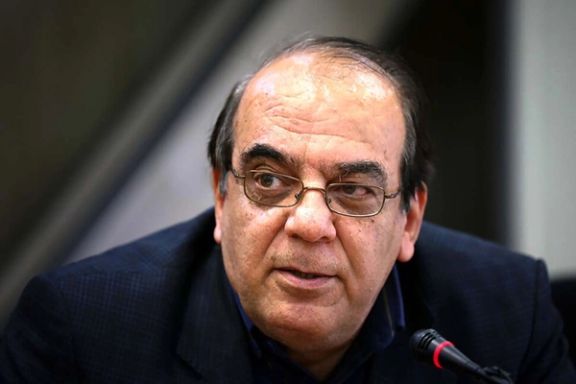
The commentator highlighted that "This is the statistics from six months ago. Currently, more people are using social media, 20 percent of them for business," and pointed out that the number of social media users is even higher among the youth” with 83 percent using apps for messaging, fun or business.
Abdi further reminded that many Iranians' livelihood depends on their presence on social media while the government has banned these platforms and created problems for many Iranians. He wrote: "The government's reason for blocking social media is that it says 90 percent of Internet content in Iran is under the control of the enemies…If 90 percent of those on social media are your enemies, then, whose government are you?"
Abdi then stated that "At least 20 percent of those on social media in Iran earn their daily” by ecommerce and he asked the government: "Do you know that you are preventing 10 million people from having an income? Do you understand that Iran is suffering from a 40-percent inflation rate? How should these people make a living?"
On 25 October, Iranian sociologist Hossein Abolhassan Tanhaei wrote in an article, which was also posted in a series of tweets, that the government's plan to give discriminatory access to the Internet to various groups of Iranians and prevent each group from accessing certain information "will lead to public anger by giving everyone a reason to believe they have been subject to discrimination."
Tanhaei wrote that currently, people have very little trust in the government and this feeling of discrimination will trigger public anger. Like Abdi, Tanhaei also noted that Iranians running their business on social media platforms will be affected by restricted access more than everyone else, and they will show the most serious reaction to the government's plan.
On 22 October, clerics at the Qom Seminary wrote a letter to Raisi demanding a permanent ban on WhatsApp, Instagram and Telegram. Meanwhile, according to reformist daily Arman Melli, the Friday prayer imam of Mashad Ahmad Alamolhoda, Raisi's father-in-law, also called for a ban on Instagram. This comes while, according to the head of Iran's passive defence organization Gholamreza Jalali, "Iranian officials have unrestricted access to Instagram."
According to Jalali, the final decision about the ban on social media will be made by the Supreme Council of National Security, which operates under the President to carry out direct orders coming from Khamenei. Even before the "final" decision is made, Behrouz Mohebbi, an Iranian lawmaker close to Khamenei's senior adviser Ali Larijani told Arman Melli on Monday that "The government will most certainly not lift the ban on WhatsApp and Instagram as these platforms are supervised by the enemies of the Islamic Republic."

Unknown gunmen shot dead two officers of Iran’s Revolutionary Guard (IRGC) in Zahedan, the provincial capital of the largely Sunni Muslim southeastern province of Sistan and Baluchestan.
An IRGC Colonel, identified as Mehdi Mollashahi, and Javad Keikha a member of the Salman Brigade, which belongs to IRGC's Basij paramilitary forces, were killed Tuesday when gunmen opened fire at them from a car and fled, the IRGC-affiliated Tasnim news reported.
The incident followed weeks of brutal crackdown by the IRGC and other Iranian security forces on protesters in Zahedan, who have joined the nationwide antigovernment protests triggered by the death in custody of 22-year-old woman Mahsa Amini.
Earlier in the week, the influential leader of Iranian Sunnis among the Baluch held Supreme Leader Ali Khamenei responsible for the September 30 massacre of Sunnis in Zahedan.
The intelligence chief of the IRGC in the province was also shot dead earlier in the provincial capital Zahedan. According to Tasnim, in addition to Colonel Mousavi, three other members of IRGC and its Basij paramilitary force were killed and 32 more injured in Zahedan clashes.
The attack by the IRGC on protesters, September 30, left more than 90 unarmed Baluch citizens dead as reported by human rights watchdogs in Iran and abroad. Sunnis in Iran comprising at least 10 percent of the population have had a rocky relationship with the Shiite clerical regime for four decades.
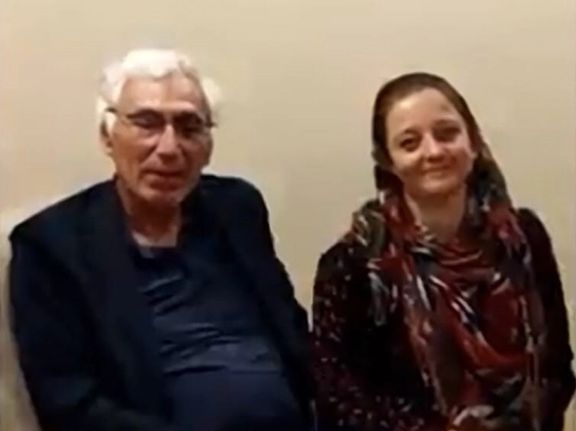
Iran says more foreign nationals have been arrested in what it calls, the “case of the French spies,” accusing them of a conspiracy to harm national security.
During a weekly press briefing, Iran’s judiciary spokesperson Masoud Setayeshi said those newly detained individuals have been accused of “conspiracy and collusion”.
However, he did not mention how many more arrests have been made and what countries the foreign nationals are from.
“In this case, other arrests have been made and the chain of information is about to be completed and will be announced as soon as it is finalized,” noted Setayeshi.
Paris lashed out at the clerical regime earlier this month accusing Tehran of the practices of “worst dictatorial regimes.”
France called the forced confession of two French nationals, arrested in May, on Iranian state TV “shameful, revolting, and unacceptable,” and demanded their immediate release.
“Cecile Kohler and Jacques Paris have been arbitrarily detained in Iran since May 2022, and as such are state hostages ... the staging of their supposed confessions is shameful, revolting, unacceptable and contrary to international law,” said a foreign ministry statement.
Iran’s state media are infamous for purported confessions by prisoners in politically charged cases. Such prisoners are held without due process of law and usually cannot chose their own defense attorney.
In a video aired earlier this month, one of the two French nationals - Cecile Kohler - said they were in Iran to “prepare the ground for the revolution and the overthrow of the regime of Islamic Iran”.
France says five of its nationals are currently held in Iran. Fariba Adelkhah, an Iranian born woman, was arrested in 2019 and sentenced to five years in prison for “undermining national security.” Benjamin Briere was also arrested in May 2020 and sentenced to eight years and eight months for espionage, without due process of law.
After the outbreak of protests following the September 16 death of Mahsa Amini at the hands of ‘morality police,’ Iran said in late September it had detained nine foreign nationals linked to unrest, including those from France, Germany, Italy, Poland and the Netherlands.
Meanwhile, several foreigners visiting Iran have disappeared, confirming earlier reports that the Islamic Republic is taking foreign citizens hostage.
Australian academic Kylie Moore-Gilbert, who was jailed in Iran for over 800 days from 2018 to 2020, said on Monday she “can confirm that the two New Zealand travel bloggers, Topher Richwhite and his wife Bridget Thackwray of 'Expedition Earth,' are missing, believed to be arrested in Iran.”
Earlier in the day, The Associated Press reported that a Spanish man trekking from Madrid to Doha for the 2022 FIFA World Cup has not been heard from since the day after he crossed into Iran three weeks ago.
Tehran denies any policy of hostage taking and insists all foreigners are tried according to legal process. However, it has frequently shown readiness for prisoner exchanges and participated in swaps in the past.
UN experts and international human rights organization say that the Islamic Republic takes foreigners hostage to extract concessions from the West.
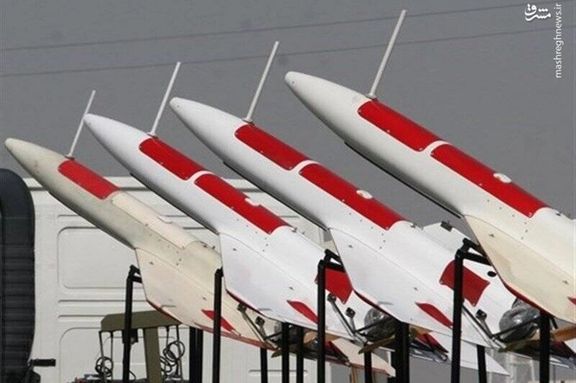
Ukrain’s President Volodymyr Zelensky says Tehran supports Moscow with drones in its invasion in exchange for getting assistance to develop its nuclear program.
Addressing the Haaretz Democracy Conference on Monday, Zelensky said that the Islamic Republic would have not been able to send equipment to Russia if Israel had not decided to stay neutral in the Ukraine war.
“In eight months of full-scale war, Russia has used almost 4,500 missiles against us. And their stock of missiles is dwindling. Therefore, Russia went looking for affordable weapons in other countries to continue its terror. It found them in Iran,” noted Zelensky.
The Ukrainian president further noted that “I have a question for you – how does Russia pay Iran for this, in your opinion? Is Iran just interested in money? Probably not money at all, but Russian assistance to the Iranian nuclear program. Probably, this is exactly the meaning of their alliance.”
Although Zelensky did not offer any evidence, Russia has built Iran’s sole nuclear power plant in Bushehr and has a contract to expand the plant with the addition of two new reactors at a cost of $10 billion.
Zelensky’s comments come as the Ukrainian Defense Ministry's Intelligence Directorate said Monday that Russia's mobilized soldiers are being provided with Iranian-made body armors and helmets, and new groups of “advisers” are also arriving in Russia to train them on the use of a new and more lethal type of drones, Arash UAVs.
Major General Kyrylo Budanov stated that “Russian forces have used most of their cruise missile arsenal and only have 13 percent of their pre-war Iskander, 43 percent of Kaliber, and 45 percent of Kh-101 and Kh-555 pre-war stockpiles left.”
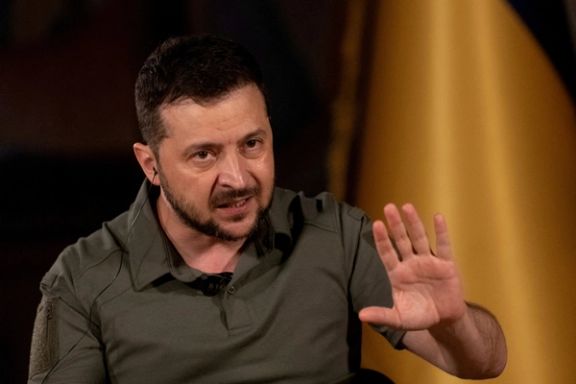
Budanov added that with the supply of cruise missiles dwindling Russian military relies on Iranian drones, but Tehran can send 300 drones per shipment as it takes a long time to manufacture the drones.
In remarks reported Monday, Iran’s foreign minister appeared to accept as possible, despite past denials, that Moscow had used Iranian drones in Ukraine.
“If it is proven to us that Iranian drones are being used in the Ukraine war against people, we should not remain indifferent,” Hossein Amir-Abdollahian said, as reported by Reuters.
The Iranian foreign ministry website and official news agencies last Friday reported Amir-Abdollahian denying claims at a European summit last week that Iran had supplied Russia with military drones deployed in the Ukraine war.
Last week, Ukrainian Foreign Minister Dmytro Kuleba officially asked for air defense systems and training from Israel’s Foreign Ministry in the face of attacks launched by Iranian Shahed drones. Yet, Israeli Defense Minister Benny Gantz stressed “that we are not selling weapons to Ukraine.”
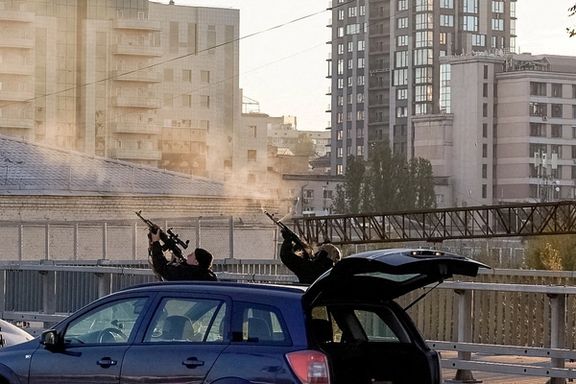
However, Israeli Prime Minister told Jerusalem Post on Sunday that Tel Aviv is increasingly concerned by the “dangerous closeness” between Moscow and Tehran over the supply of Iran-made drones to attack Ukraine.
Lapid said Israel is holding daily assessments to review its position on the conflict, adding that “It’s not something we are going to ignore or do nothing about… so what we need to do is reassess on a daily basis and react.”
Meanwhile, US House of Representatives Speaker Nancy Pelosi said on Monday that Iran was making the world less safe by supplying Russia with drones to be used against targets in Ukraine.
The US has been “trying for a while now to have a nuclear agreement with Iran so that we can make the world a safer place and now they're going off aiding the Russians and making the world a less safe place,” added Pelosi.
With the long suspension of negotiations to revive the 2015 nuclear agreement, Iran is now accused of involvement in the Ukraine war. On the other hand, Tehran’s crackdown on domestic protests is also drawing attention from the international community raising the possibility of more isolation and sanctions for Iran.
An Iranian daily on Tuesday said that the developments of the war in Ukraine are in an alarming way to the detriment of Iran.
Aftabnews warned the Iranian government that Russia’s invasion of Ukraine is an aggressive move to occupy an independent UN member state and the governments that support the aggressor will be considered violators of international law.
“It is said that the United States and three European countries have interpreted the provision of drones by Iran as a violation of UN Resolution 2231. If proved after investigations, it will justify and legitimize the activation of the snapback mechanism against Iran in the JCPOA agreement,” Aftabnews added.
If the snapback mechanism would be triggered, Iran will return to Chapter Seven of the UN Charter and all sanctions in place before the 2015 nuclear deal would be automatically reimposed on Iran.